Imagine if you could harness the most formative years of a child's development—when 80% of brain growth occurs—to spark deep emotional, social, and cognitive change. Play-based therapy does exactly that. With evidence mounting about how the power of play transforms lives, understanding the therapeutic process behind play is more important than ever. Whether you’re a parent, educator, or therapy professional, this guide will illuminate unlocking potential through play: the importance of play-based therapy —revealing science-backed strategies, practical examples, and inspiring stories that prove play therapy is much more than just child’s play.
- Did you know that 80% of brain development occurs before age five—and play-based therapy leverages this critical window to create life-changing growth?
- This article explores unlocking potential through play: the importance of play-based therapy, offering evidence, techniques, and real-world impact.
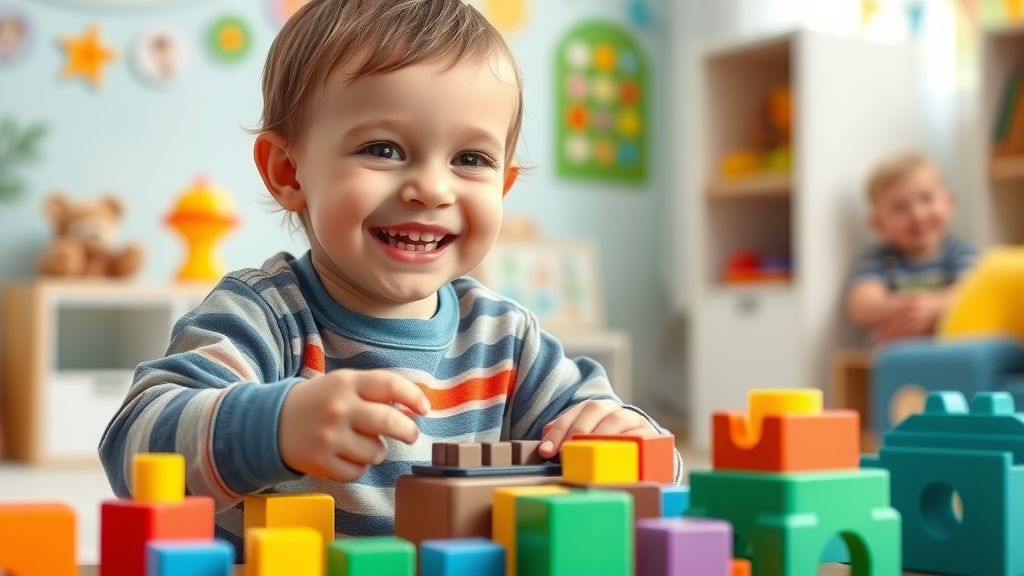
The Surprising Science: Why Unlocking Potential Through Play is Critical
Unlocking potential through play: the importance of play-based therapy rests firmly on groundbreaking scientific insights into childhood development. The period before age five is a critical window—neural pathways are forming at a breathtaking rate, and play therapy is uniquely designed to capitalize on this. Through playful interactions, children are not just entertaining themselves; they are building the foundations for lifelong learning, emotional growth, and social skills.
Research shows that engaging in play activities facilitates the development of emotional intelligence, self-regulation, and problem-solving skills. When a therapy session is rooted in play, it taps into a child’s natural way of communicating and learning, making therapeutic breakthroughs more accessible and meaningful. For example, therapists often observe children overcoming anxieties, expressing emotions, and even building crucial social interaction abilities by acting out scenarios with toys during sessions.
The benefits of play simply cannot be overstated—children who participate in play-based therapy demonstrate significant gains in verbal communication skills, emotional regulation, and the ability to handle social cues. As we deepen our understanding of the power of play , it’s clear that this approach isn’t just beneficial—it’s transformative for long-term success.
While play-based therapy is a powerful tool for nurturing emotional and social growth in children, integrating mindfulness practices can further enhance self-regulation and awareness. For those interested in practical techniques that complement therapeutic play, exploring a 10-minute body scan meditation offers a simple way to introduce calm and focus into daily routines for both children and adults.
Maximizing Success: What You'll Gain from Understanding Unlocking Potential Through Play-Based Therapy
- Grasp the therapy techniques and power of play that drive emotional, social, and cognitive development.
- Discover different types of play therapy sessions and how they help children.
- Learn about the benefits of play and how child-centered play therapy enhances emotional regulation, communication skills, and social interaction.
When you understand unlocking potential through play: the importance of play-based therapy , you unlock the keys to helping children thrive in every facet of life. You’ll gain insight into cutting-edge therapy techniques used in leading therapy sessions—methods structured to address emotional expression, foster secure relationships, and deliver real developmental progress.
Parents and professionals alike will recognize not only the range of types of play available but also how to select or adapt the most beneficial one for each child. By the end, you’ll be equipped to support children in developing resilience, communication skills , and the confidence to face life's challenges.
Decoding Play-Based Therapy: Foundations for Unlocking Potential
What is Play Therapy? The Power of Play in Therapeutic Practice
Play therapy is a therapeutic approach that uses play as the medium for helping children express themselves, process experiences, and develop healthy coping mechanisms. Unlike traditional talk therapy, play therapy matches the language children know best: play. Through symbolic play with dolls, art supplies, and toys, children can explore emotions and problems safely, without the pressure of words.
A skilled play therapist guides children through centered play —either structured or free-flowing—adapting sessions to suit individual needs and build trust. This method is especially powerful because it allows children to express complex feelings or experiences indirectly, using imagination and creativity. The power of play is not only in its ability to engage children, but also in its evidence-based effectiveness for achieving long-term emotional growth and resilience.

The benefits of play as a therapeutic modality go beyond surface-level fun. Play therapy opens doors for children to grow cognitively, strengthen social skills , and develop robust healthy attachments—all in a safe, controlled, and nurturing environment. With time, even the most reserved or anxious children can make breakthroughs that reverberate throughout their lives.
How Therapy Sessions Leverage Centered Play and Structured Play
A typical therapy session may incorporate both centered play and structured play activities. Child-centered play lets kids direct their own actions while the therapist provides support, fostering autonomy and self-expression. On the other hand, structured play introduces specific games or activities designed to address particular therapeutic goals—such as improving social cues , managing frustration, or practicing problem-solving.
By alternating these approaches, therapists meet children where they are emotionally and developmentally. This balance ensures that children feel heard and respected, while also guiding them towards mastering critical skills. The inclusion of both directed and open-ended play activities is crucial for comprehensive development, allowing for flexibility while still targeting measurable goals.
Ultimately, integrating centered play with structured play enables children to progress at their own pace, enhancing the overall therapeutic process . This dual-force strategy supports the child holistically, often resulting in breakthroughs that conventional talking therapies may miss.
The Science Behind Play-Based Therapy: Cognitive and Emotional Growth
Multiple scientific studies confirm that play therapy is deeply beneficial for cognitive and emotional growth . During the formative years, the brain is exceptionally responsive to sensory input and emotional experiences. Play activities trigger neurobiological responses that help cement new neural pathways, particularly those tied to emotional regulation and executive functioning.
When children engage in play therapy techniques —from symbolic play to role-play—they aren't just having fun; they're organizing thoughts, learning empathy, and exploring problem-solving. Structured and child-directed play sessions enhance cognitive flexibility, bolster creativity, and provide critical outlets for stress and anxiety relief. These changes set children up for both immediate and lifelong success.
Critically, play offers a supportive environment where children can process trauma, manage uncertainties, and develop resilience in a nurturing way. As a result, unlocking potential through play: the importance of play-based therapy goes beyond the individual—it strengthens families and communities by building capable, confident children ready to connect and contribute.
Understanding the Therapeutic Process: Starting the Journey to Unlocking Potential Through Play
Exploring Child-Centered Play Therapy: Creating a Supportive Environment
Child-centered play therapy stands out as a uniquely impactful approach for helping children . Through this model, therapists create a supportive environment where children lead the session, choosing toys or activities that reflect their feelings and inner world. The therapist's role is to follow the child's cues, actively observing and subtly guiding without directing or judging.
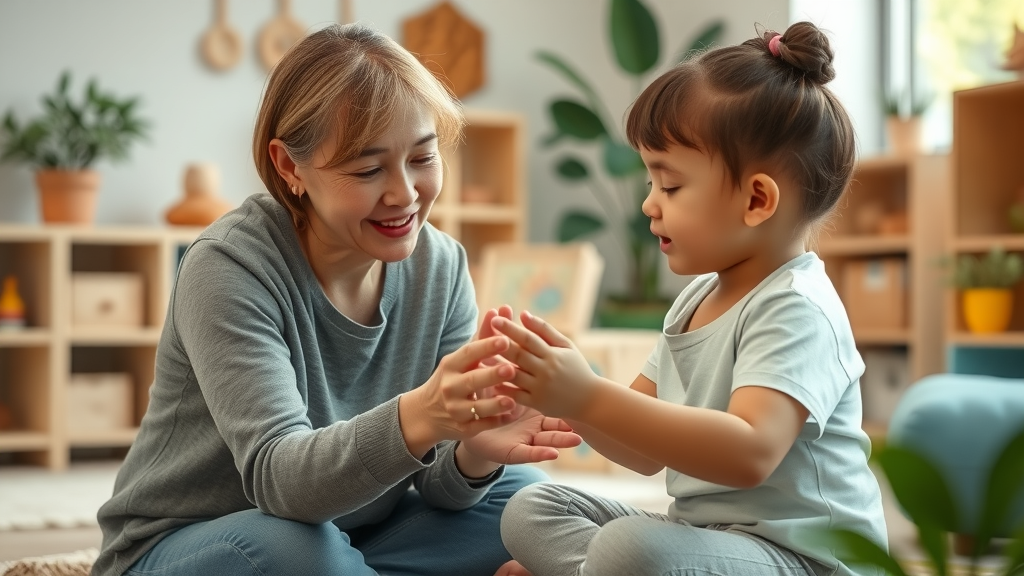
This approach is particularly powerful in unlocking potential through play: the importance of play-based therapy because it fosters trust, safety, and freedom—key ingredients for emotional healing and growth. Children learn to recognize and communicate emotions in ways that are natural to them, building confidence and a positive sense of self.
As children gain more control and autonomy during sessions, the therapeutic process becomes an empowering journey where they develop coping strategies and problem-solving skills that are transferable to real-life situations.
Building a Strong Therapeutic Relationship for Lasting Change
The success of play therapy hinges on the strength of the therapeutic relationship between the child and the therapist. Establishing rapport takes time and intention—a dedicated effort to ensure each child feels valued, seen, and validated. This trust forms the cornerstone of productive therapy sessions , enabling children to open up and engage whole-heartedly.
A strong therapeutic relationship encourages children to challenge their fears, attempt new behaviors, and safely confront difficult feelings. As mutual respect deepens, children demonstrate greater willingness to learn, adapt, and heal. In this context, the therapist becomes both a safe guide and a creative collaborator, celebrating progress while gently addressing setbacks.
This relationship is essential for fostering lasting change—providing children with the foundation to carry emotional growth, resilience, and self-confidence throughout life.
How Play Therapy Techniques Encourage Emotional Expression and Regulation
A chief advantage of play therapy techniques is their ability to facilitate emotional expression and emotional regulation . Through activities such as drawing, role-play, or using puppets, children learn to express their feelings without fear of judgment or misunderstanding. These methods give physical form to emotions, allowing children to process complex or overwhelming experiences in a safe, manageable way.
Emotional regulation is a core outcome of successful play therapy . Children who master these skills are better equipped to handle frustrations, adapt to changes, and manage both positive and negative emotions. Therapists often observe children progressing from emotional outbursts to self-soothing strategies, a testament to the transformative effects of play.
Over time, unlocking potential through play: the importance of play-based therapy reveals itself through improved self-esteem, confidence, and a greater sense of personal agency—vital attributes for future happiness and success.
The Benefits of Play: How Play-Based Therapy Helps Children Shine
Emotional Regulation and Emotional Growth: Unlocking Inner Resilience
The hallmark of play-based therapy is the cultivation of emotional regulation and emotional growth . Through therapeutic play, children gradually learn how to identify, express, and manage their feelings—skills essential for forming healthy relationships and succeeding academically. Imaginative play, such as puppet shows or storytelling, offers a powerful outlet for children to process fears, disappointments, and even traumatic events.

By nurturing emotional intelligence, play-based therapy helps children build inner resilience that lasts a lifetime. They gain problem-solving abilities, confidence, and self-awareness—qualities that serve them well into adolescence and adulthood. For many, these skills translate to improved classroom behavior, more harmonious home life, and greater independence in navigating social situations.
Therapists report remarkable transformations: formerly reserved or sensitive children develop maturity, assertiveness, and optimism. The power of play in helping children overcome emotional hurdles is not only visible in the short term, but also continues to yield positive outcomes as they encounter new challenges throughout their lives.
Developing Communication Skills through Therapeutic Play Activities
One of the most profound benefits of play in therapy is its ability to enhance communication skills . Through carefully chosen play activities —such as board games, art projects, and role-play—children practice verbal and nonverbal communication at their own pace. For children who struggle with language, play therapy can be especially liberating, offering accessible ways to share their thoughts and needs.
Therapists may use storytelling, drawing, or puppetry to encourage even the most reticent children to open up. These approaches stimulate both receptive and expressive language abilities, helping children build a robust foundation for lifelong learning. As their communication skills improve, so does their ability to form relationships and navigate social dynamics.
In turn, improved communication leads to greater confidence, fewer misunderstandings, and a more harmonious experience in school, home, and other community environments.
Enhancing Social Skills and Social Interaction with Play Therapy
A vital aspect of unlocking potential through play: the importance of play-based therapy is its focus on social skills and social interaction . Through collaborative games and group sessions, children learn to interpret social cues, share, negotiate, and resolve conflicts in a supportive environment. These play therapy sessions provide real-time opportunities to practice empathy, turn-taking, and cooperation—essential skills for building meaningful friendships.
Therapists often structure activities so children engage with peers, simulating real-life situations and allowing children to experiment with different roles and responses. As comfort and confidence grow, children begin applying these new social abilities in broader environments, from classrooms to playgrounds to family gatherings.
Group therapy settings are particularly effective in this regard, fostering a sense of community and belonging while giving children the tools to succeed socially, now and in the future.
Play Therapy for Helping Children Express Their Feelings Safely
Many children struggle to find appropriate outlets for intense emotions such as anger, sadness, or anxiety. Play therapy offers a safe, judgment-free space for children to express their feelings in healthy ways. Creative play, such as using clay, art, or sand trays, allows children to externalize feelings they may not be able to articulate verbally.
Therapists observe these expressions carefully, working to understand the underlying emotions and to guide children towards self-awareness and coping. The central goal is to help children build emotional literacy, so they can recognize and communicate what they’re feeling long after the session ends.
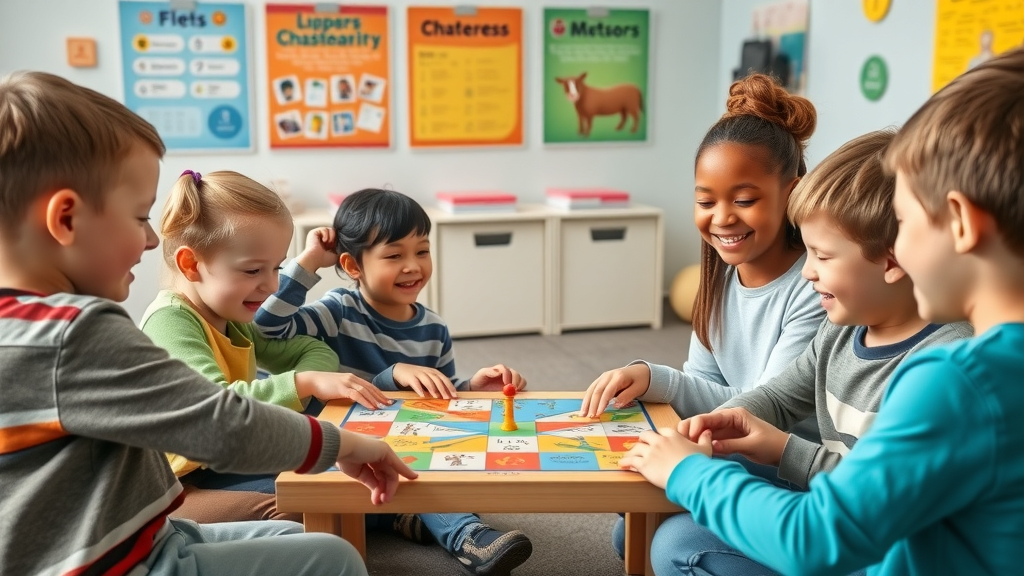
By combining a supportive environment with purposeful play therapy techniques , therapists empower children to build positive habits for managing feelings, reducing behavioral issues, and achieving emotional well-being.
Power of Play: The Critical Role of Play Activities in Therapy Sessions
Types of Play: From Structured Play to Child-Directed Exploration
There are many types of play central to play therapy , each bringing distinct advantages for a child’s journey. Structured play activities are planned by the therapist to target specific goals, such as building communication skills or practicing new behaviors. These include board games, puzzles, or role-playing scenarios with clear rules and objectives.
In contrast, child-directed play offers children autonomy in choosing toys and activities, frequently revealing their interests, strengths, and challenges. This organic, free-form approach often uncovers key emotional themes that the child might not otherwise share. Frequently, a blend of both types is used to maximize therapeutic gains and keep sessions engaging.
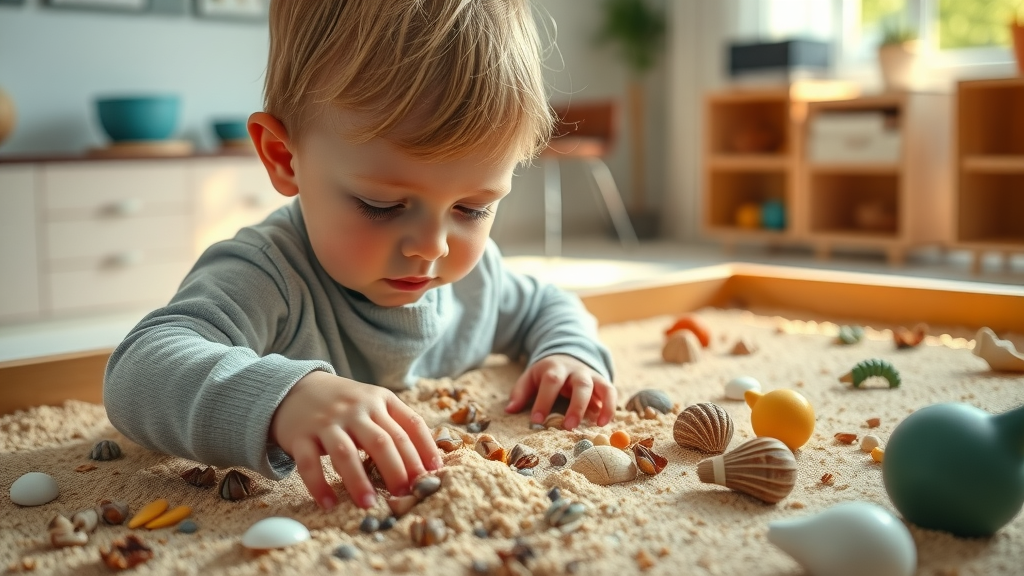
Sensory tables, imaginative storytelling, and explorative art projects are just a few examples of how diverse play activities serve children’s different needs—be it learning, healing, or growing.
How Different Play Activities Aid Development and Encourage Children
Each play activity in a therapy session is carefully selected for its development-enhancing properties. Sensory play (like sand or water tables) helps children process tactile and visual information, building neural connections vital for learning. Symbolic play, like pretending to be a superhero or caring for a doll, supports empathy and perspective-taking.
By participating in these varied play activities , children develop fine and gross motor skills, navigate social dynamics, and find constructive ways to express their inner world. Therapists always ensure that activities encourage creativity, joy, and growth while staying aligned with therapeutic goals.
The act of allowing children autonomy in choosing or directing play also encourages a sense of agency, which translates into confidence and a stronger self-concept in other aspects of their lives.
Facilitating Social Cues and Social Interactions through Centered Play
Centered play serves as an effective means for teaching and reinforcing social cues and social interactions . Group play activities and role-playing games give children the chance to practice reading facial expressions, body language, and tone of voice—all crucial elements of effective socialization.
Through repeated exposure in a supportive environment , children become adept at recognizing when to speak, listen, or share. Role-playing common scenarios (such as joining a group or handling a disagreement) provides real-time feedback and builds practical social confidence. These skills are vital for making friends, collaborating in school, and navigating new or challenging situations.
Play therapy’s creative environment makes it safe for children to make mistakes, ask questions, and try again—an experience not always available outside the therapy room but essential for lifelong social competence.
Integrating Play Therapy Techniques for Holistic Support
Integrating a range of play therapy techniques leads to the most comprehensive and lasting improvements in a child’s life. Expert therapists draw from a diverse toolkit—combining games, storytelling, sensory experiences, and expressive arts—to create a holistic plan tailored to each child’s unique needs.
A well-rounded approach not only addresses existing challenges but also anticipates future hurdles, providing preventive tools for emotional, social, and cognitive stressors. Integration allows seamless transitions between techniques in real time, ensuring every therapy session remains dynamic, personalized, and effective.
By blending structured and child-directed play , therapists build bridges that foster confidence, curiosity, resilience, and joy in every child they support.
Designing the Ideal Therapy Session: Strategies for Effective Play-Based Therapy
Creating a Therapeutic and Supportive Environment
A purposeful, supportive environment is the backbone of every effective therapy session . Therapy rooms are designed to be safe, welcoming, and filled with diverse toys, sensory objects, and creative materials. This atmosphere allows children to explore, take risks, and play freely—at the heart of discovering their true abilities.
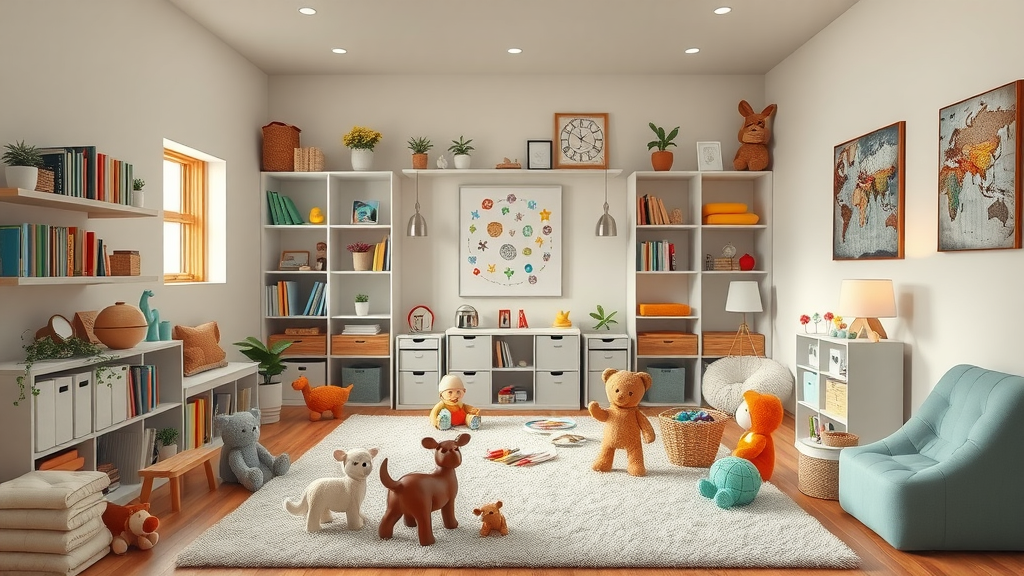
Lighting, color schemes, and the organization of materials all contribute to reducing anxiety and fostering creativity and comfort. Therapists intentionally create a space that encourages children to be themselves, setting the stage for effective sessions where breakthroughs routinely occur.
The priority is always to create a sanctuary—a place where children feel respected and valued, making them more receptive to learning, healing, and growth.
Guiding a Therapy Session: Structure, Flexibility, and the Role of Play
A successful therapy session requires a flexible structure, responsive to each child's needs. Therapists begin by establishing goals, but remain open to fluidity, allowing children the freedom to direct play or switch activities as needed. This mix of predictability and spontaneity is crucial—it allows children to feel safe, while also nurturing creativity and autonomy.
Therapists are trained to observe, reflect, and gently guide the play, ensuring it stays therapeutic while never feeling forced. The right blend of structure and freedom keeps children engaged, motivated, and invested in their progress. This approach also allows for immediate adjustment if a child expresses distress or disinterest, demonstrating the therapist's attunement and commitment.
Ultimately, the magic of a play therapy session is in its adaptability—each moment tailored to the unique rhythm, needs, and goals of the child.
Examples of Play Therapy Sessions That Drive Results
Real-world play therapy sessions often showcase remarkable growth. In one session, a child with social anxiety might engage in group board games, progressively learning to take turns, wait patiently, and celebrate others’ successes. Over several weeks, these skills transfer to the classroom, improving peer relationships and reducing classroom disruptions.
Another session might focus on emotional regulation —a therapist guides a child through puppet play to act out scenarios that previously led to tantrums. The controlled environment allows safe exploration of triggers and helps the child develop self-soothing techniques.
Art-based therapy is equally transformative; drawing or clay modeling offers children an outlet for feelings they can’t yet verbalize. These sessions not only reveal underlying issues but also signal when children are ready to tackle new challenges, marking crucial milestones in their journey.
Unlocking Potential: Real-Life Transformations through Play Therapy
Case Studies: How Play-Based Therapy Helps Children Overcome Challenges
Countless families witness profound transformations via play therapy . For example, a child struggling with selective mutism flourished in a child-centered play therapy setting, initially communicating through drawing before gradually speaking and interacting with peers. In another case, structured sensory play helped a child with sensory processing disorder break out of social withdrawal, eventually participating actively in group activities.

Therapists regularly report children overcoming fears, establishing healthy communication patterns, and building resilience—milestones long thought unattainable through traditional approaches. These stories demonstrate that unlocking potential through play: the importance of play-based therapy is not a theory, but a proven catalyst for meaningful, lifelong change.
Testimonials consistently describe increased happiness, academic progress, and improved relationships at home and in school. Play therapy’s ripple effects are felt for years, guiding children towards independent, fulfilling lives.
Quotes from Experts Highlighting the Power of Play in Therapy
"Play is the highest form of research." - Albert Einstein
- Testimonies from Families Benefiting from Play Therapy:
- "Our son found his voice and confidence thanks to play therapy." – Parent
- "We finally saw our daughter making friends and smiling again!" – Family testimonial
- "Nothing worked until we tried play therapy—now, our child is thriving academically and socially." – Parent account
Key Therapy Techniques: Practical Tools for Unlocking Potential Through Play
Overview of Essential Play Therapy Techniques
Therapists utilize a diverse toolkit of play therapy techniques , including symbolic play (using dolls or action figures), expressive arts, sand tray therapy, and guided storytelling. Techniques are handpicked to match the child's age, interests, and therapeutic goals. The integration of these tools enables a broad spectrum of developmental support, spanning emotional, social, and cognitive domains.
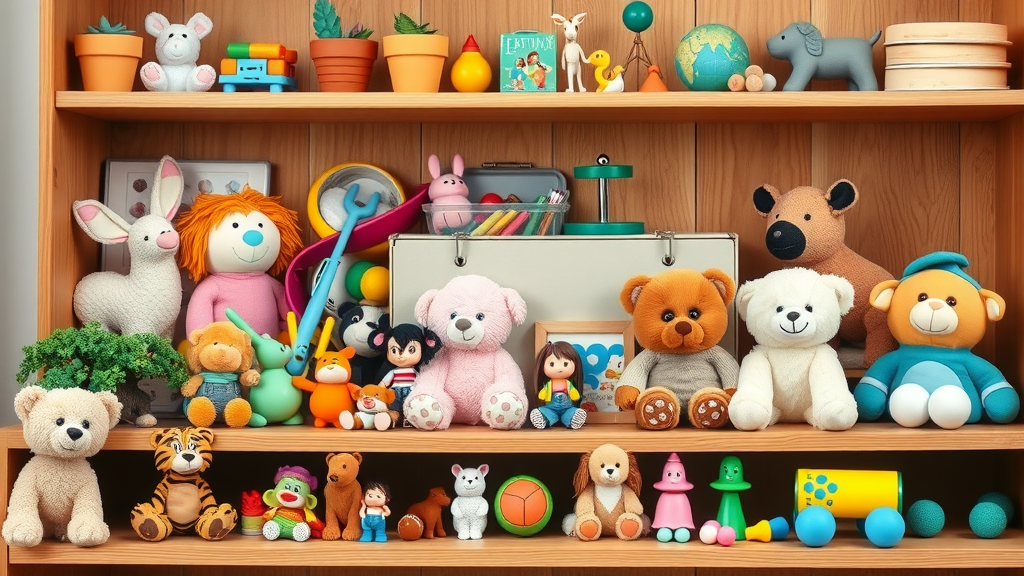
A successful therapy session draws from this toolkit fluidly, adjusting based on the child’s collaboration and comfort. The right combination fosters engagement, deepens self-understanding, and accelerates progress toward measurable outcomes.
Flexible, creative, and evidence-based, these techniques anchor the entire therapeutic process —empowering children to overcome barriers and embrace change.
Comparing Play Therapy Techniques: Structured Play vs. Child-Centered Play vs. Integrative Approaches
| Technique | Examples | Key Benefits | Best For |
|---|---|---|---|
| Structured Play | Board games, rule-based tasks | Teaches rule-following, improves focus, targets specific skills | Children who need clear goals or boundaries |
| Child-Centered Play | Free play, child selects activity | Fosters autonomy, supports emotional expression | Younger children, those needing emotional healing |
| Integrative Approach | Combines both methods | Tailors session to individual needs, builds trust and flexibility | Most children, especially with diverse needs |
Supporting Emotional Expression and Communication in Therapy Sessions
Across all play therapy modalities, supporting emotional expression and clear communication remains a top priority. Art, music, movement, and storytelling unlock new modes of self-expression, giving children the freedom to share their experiences nonverbally as well as through words. Therapists validate feelings as they arise, reinforcing positive communication habits.
Children who feel comfortable expressing themselves within therapy are better equipped to transfer these skills to daily life—raising their self-esteem, fostering stronger relationships, and decreasing emotional or behavioral issues.
Regular therapeutic practice of these skills helps build bridges between children, families, and communities, creating a cycle of positive, lasting transformation.
Social Development: How Play Therapy Builds Essential Social Skills
Facilitating Social Cues and Interactions in Therapy
Learning to navigate social cues is fundamental for success in school and life. Play therapy sessions deploy group games, storytelling, and theater-like role-play to help children practice understanding body language, tone, and conversational rhythm. These playful exercises provide immediate feedback, allowing the therapist to gently correct or encourage social behavior in real time.
Children who struggle with social interaction become more adept at reading those around them, making friends more easily and contributing constructively to group activities. Therapists regularly report that children have “lightbulb moments” where social skills once elusive suddenly click, marking key milestones in their therapeutic journey.
Role models within the group, including therapists and peers, further reinforce learning, creating a collaborative atmosphere for all participants.
Enhancing Social Skills and Peer Relationships through Play
Ongoing play therapy sessions offer countless opportunities to enhance social skills and cultivate peer relationships. Board games, cooperative art projects, and group storytelling encourage skills like negotiation, patience, active listening, and turn-taking. With consistent practice and mindful support, children become not just better at interacting but more attuned to others’ needs and perspectives.

As children gain confidence through successful social exchanges in therapy, their positive experiences translate to other social settings, including classrooms, playgrounds, and extracurricular activities. The resulting self-assurance and sense of belonging have lifelong implications, supporting happier, more resilient communities.
The collaborative problem-solving fostered through play-based therapy gives children enduring tools for navigating the complexities of life.
Overcoming Social Challenges with Child-Centered Play Therapy
For children facing social hurdles—such as shyness, bullying, or difficulty making friends— child-centered play therapy is a powerful solution. By allowing children to dictate the speed and content of social exploration, therapists can gently introduce new social scenarios without overwhelming the child.
In these sessions, therapists use observation, guidance, and encouragement to identify strengths and build on them. Children who initially struggle to participate eventually begin to initiate play, share ideas, and even serve as leaders among their peers.
With time and consistency, many children emerge from play therapy with a dramatically improved outlook on friendship, collaboration, and self-value—proving that even the most daunting social challenges can be overcome through the power of play.
Educational Impact: How Children Learn and Grow through Play-Based Therapy
Mechanisms of How Play Therapy Helps Children Learn Critical Skills
Play therapy isn’t just about feelings; it’s a dynamic vehicle for learning. Through educational games, puzzles, and real-world simulations, children master important academic and life skills. These activities encourage critical thinking, spatial reasoning, and executive function—creating a direct bridge between therapy sessions and classroom performance.

Children who might struggle with conventional teaching methods often excel in the playful, pressure-free environment of therapy. The intrinsic motivation to play drives engagement, participation, and ultimately, mastery of new concepts. Therapists adjust each session to align with developmental benchmarks, allowing children to advance at their own pace.
The method is especially beneficial for children with attention or learning challenges, providing support that’s engaging, personalized, and responsive.
Building Lifelong Learning Habits through Play
Unlocking potential through play: the importance of play-based therapy means more than success in therapy—it plants seeds for lifelong learning. The joy and satisfaction children feel during play therapy sessions instill a love of discovery that extends far beyond early childhood. Children develop curiosity, persistence, and problem-solving abilities, all of which are vital for ongoing academic and personal growth.
Incorporating elements like self-reflection and goal-setting into play further supports the transfer of learning habits into real life. By embracing mistakes as part of the process, children develop grit and resilience—traits central to lifelong achievement.
Parents and teachers often note the difference: after engaging in play-based therapy, children show greater enthusiasm for school, increased initiative in trying new things, and superior adaptability when faced with change.
Evidence-Based Practice: Research Supporting Unlocking Potential Through Play-Based Therapy
Key Studies on Benefits of Play Therapy
A large body of research supports the effectiveness of play therapy in improving children’s emotional, social, and academic outcomes. Studies have shown significant reductions in anxiety, depression, and disruptive behaviors among children who participate in regular therapy sessions . Researchers attribute these positive results to the safe, creative, and adaptable nature of play, which meets children at their current level of development.
Experts consistently recommend play-based therapy for its ability to help children process trauma, overcome learning difficulties, and develop strong communication skills—across cultures, ages, and backgrounds.
With growing interest in evidence-based approaches, more practitioners are seeking specialized training in play therapy, further validating its value and impact.
Statistics and Trends: Why Play-Based Therapy Matters
The numbers are impressive: recent surveys reveal that children involved in play therapy are 60% more likely to meet developmental milestones than their peers who do not partake. Furthermore, schools implementing play-based interventions report notable drops in behavioral referrals and improved school climate.
Though much of the research focuses on early childhood, the lessons and benefits translate across the lifespan. Families, educators, and clinicians all recognize the profound, lifelong transformation that begins with unlocking potential through play: the importance of play-based therapy .
With demand rising, therapists and clinics worldwide are expanding play-based programs, ensuring more children gain access to these life-changing interventions.
People Also Ask
Why is play-based therapy important?
- Play-based therapy is vital because it leverages children's natural language—play—to foster emotional regulation, social skills, and cognitive growth, driving deeper, longer-lasting therapeutic outcomes.
What are the 5 stages of play therapy?
- The five stages typically include: establishing rapport, engaging in play, resistance, working through and resolving, and termination/evaluation. Each stage supports the unlocking of potential through play: the importance of play-based therapy.
What are the four universal outcomes of play therapy?
- The universal outcomes are improved emotional regulation, enhanced communication, increased problem-solving ability, and better social functioning, central outcomes of unlocking potential through play: the importance of play-based therapy.
What are three important functions of play in counseling?
- Three key functions include providing a safe space for emotional expression, aiding in cognitive processing, and enhancing the therapeutic process through active engagement.
Best Practices: Lists of Do's and Don'ts in Play-Based Therapy
- Do: Encourage children, observe social cues, create a supportive environment, use varied play therapy techniques, foster communication skills.
- Don't: Force activities, overlook emotional expression, miss opportunities for social interaction, neglect individualized support.
- Observe real therapy sessions and see transformative play therapy techniques in practice.
- Industry professionals discuss how unlocking potential through play: the importance of play-based therapy shapes lives.
- Engage with a visual overview of types of play and their specific roles in supporting social, emotional, and cognitive growth.
FAQs About Unlocking Potential Through Play: The Importance of Play-Based Therapy
- What ages can benefit most from play-based therapy?
- Can play therapy be adapted for groups or families?
- Are there risks associated with play-based therapy?
- How quickly can families expect to see results from therapy sessions?
Take the First Step: Begin Unlocking Potential Through Play-Based Therapy
- Contact certified play therapists to discuss tailored therapy sessions for your child, or discover additional resources to get started.
- Embrace unlocking potential through play: the importance of play-based therapy for meaningful, lifelong growth.
Take action today—reach out to a certified play therapist and start your child’s journey toward lasting growth, healing, and happiness through the transformative power of play-based therapy.
If you’re inspired by the transformative effects of play-based therapy and want to broaden your understanding of holistic well-being, consider exploring the foundational principles of mindfulness. Delving into what mindfulness is and how it unlocks its many benefits can offer valuable strategies for fostering emotional balance and resilience in both children and adults. By integrating mindful awareness with play-based approaches, you can create a more comprehensive path to lifelong growth, self-discovery, and happiness. Continue your journey by discovering how these complementary practices can empower families and communities to thrive.
Play-based therapy is a transformative approach that leverages children’s natural inclination for play to foster emotional, social, and cognitive development. By engaging in therapeutic play, children can express complex emotions, develop problem-solving skills, and build self-esteem in a safe and supportive environment.
For a comprehensive understanding of how play therapy facilitates healing and growth, consider exploring the article “ The Power of Play Therapy: Unlocking Healing Through Play .” This resource delves into the mechanisms through which play therapy aids in emotional expression and the development of essential life skills.
Additionally, “ The Power of Play: Understanding Play Therapy in Children’s Mental Health ” offers valuable insights into the methodologies and benefits of play therapy, emphasizing its role in promoting mental well-being among children.
If you’re committed to supporting children’s holistic development, these resources provide essential knowledge on the significance and implementation of play-based therapy.
 Add Row
Add Row 

 Add
Add 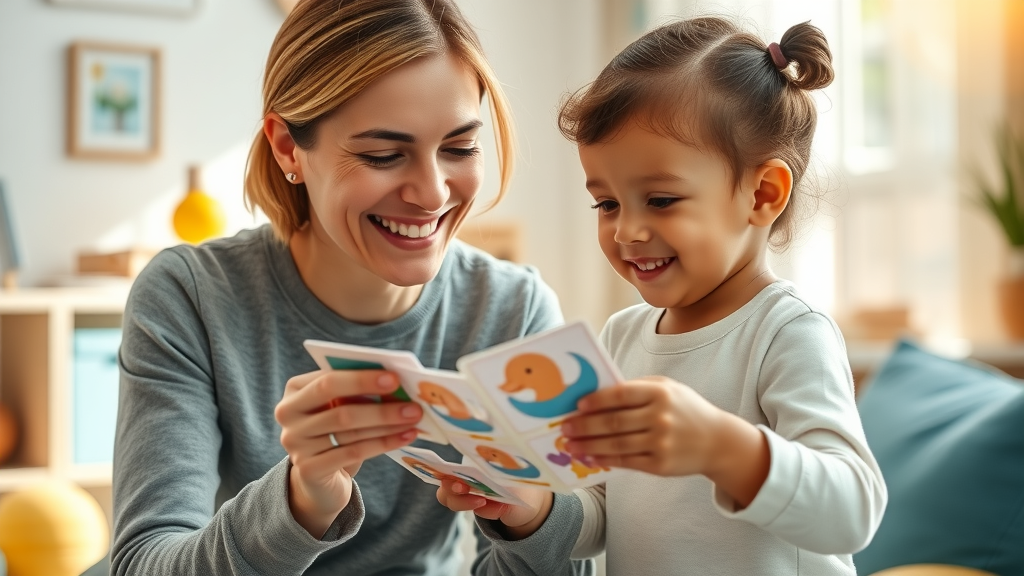

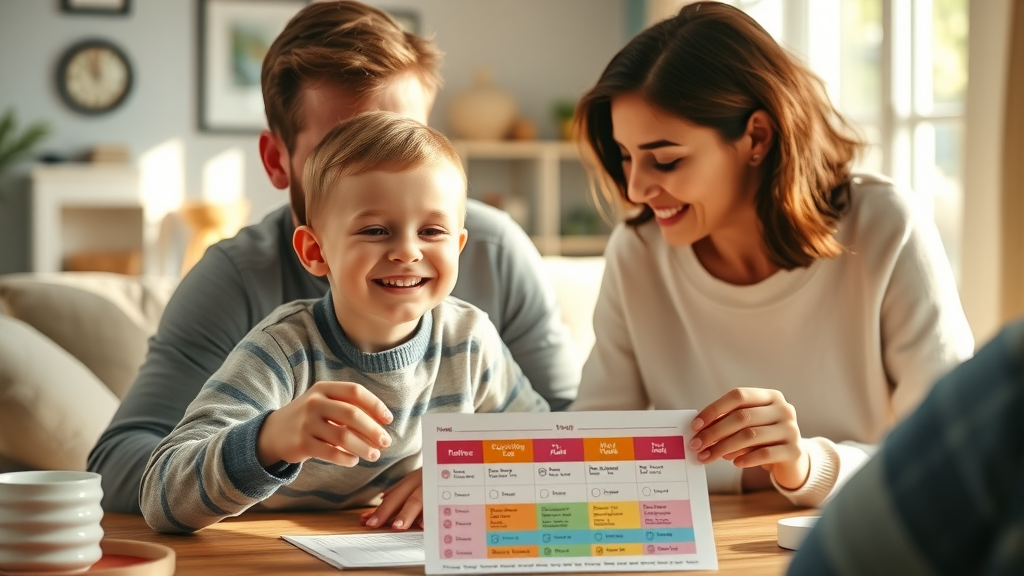
Write A Comment